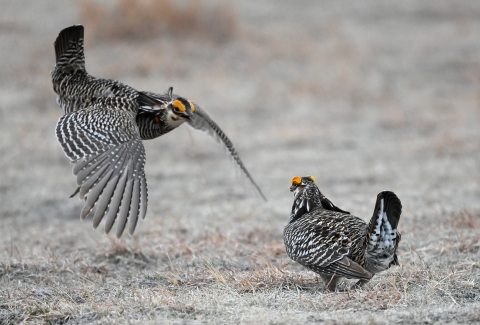Visit Us
John and Louise Seier NWR is located about 25 miles south of Bassett, Nebraska, off of Highway 183.
Location and Contact Information
About Us
The John W. and Louise Seier National Wildlife Refuge is administered through the Sandhills National Wildlife Refuge Complex at Fort Niobrara National Wildlife Refuge.
The Refuge is made up of grassland and wetland habitats. Two creeks run through the Refuge; Bloody Creek and Skull Creek. Bloody Creek, a smaller stream that runs only during high precipitation, cuts across the Refuge for 1.25 miles. Skull Creek, a larger stream that runs throughout the year, flows across one-half mile of the western portion of the Refuge, and empties into the Calamus River. A variety of wildlife, small and large game species, such as white-tailed deer, prairie grouse and wild turkeys, as well as many other species of birds call the Refuge home.
What We Do
Refuge staff utilize a variety of management techniques to maintain, restore and enhance plant and wildlife habitats. Refuge staff carefully consider all management techniques and employ them in the most efficient and sound manner possible. Prescribed burning, mowing, grazing, and native plant seeding are some of the techniques that may be used to help restore native plant communities.
Wildlife and vegetation surveys are conducted on the Refuge throughout the year to inventory populations and document habitat use. Units are evaluated by how well they meet the habitat and wildlife use objectives set for the Refuge.


